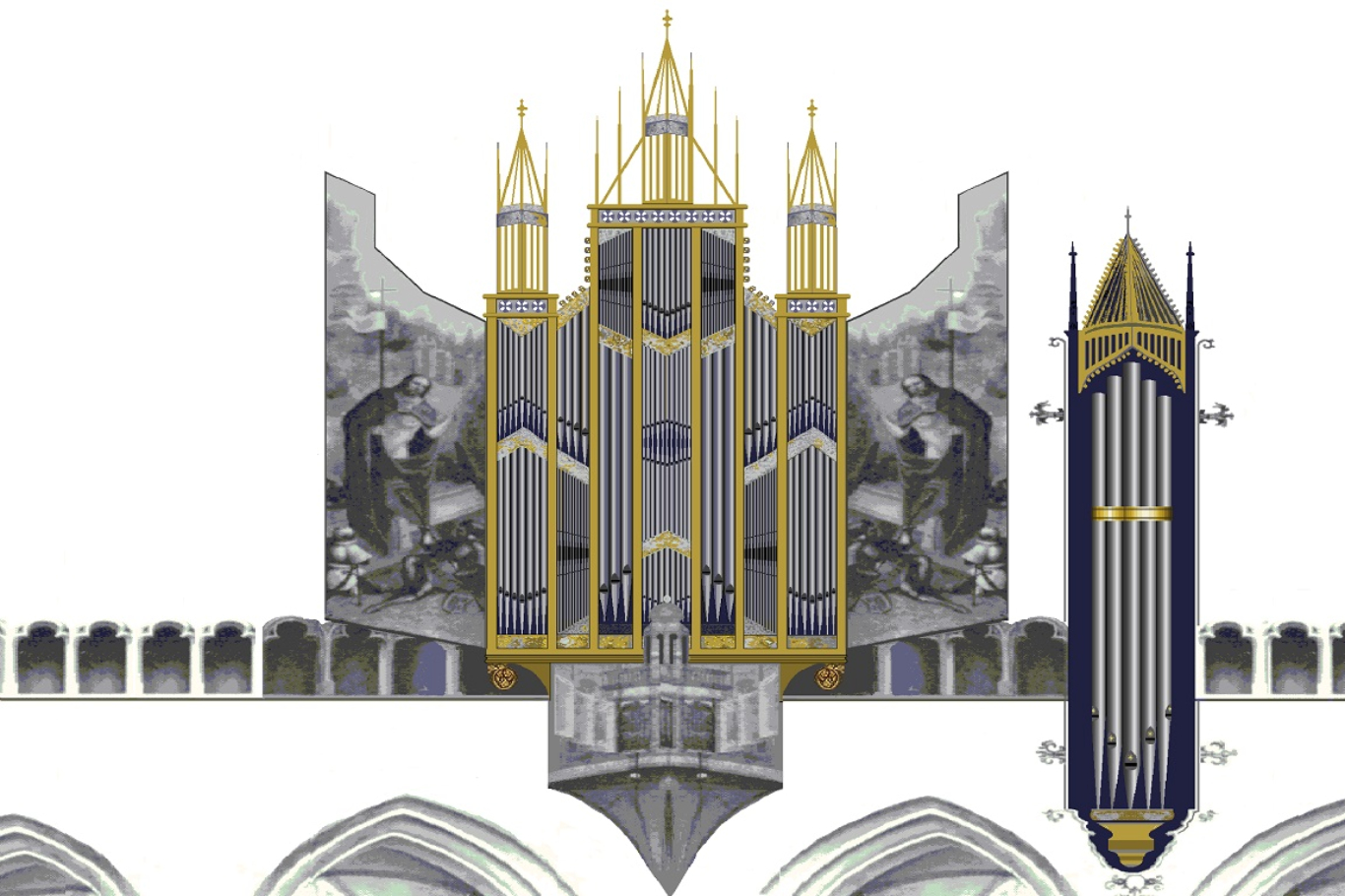The Gerritsz-organ of the Bavo church in Haarlem
Pieter Jansz. Saenredam (1597-1665) creates in 1636 again a painting of the interior of the church of Saint Bavo in Haarlem. 1 Saenredam lives in Haarlem and made already paintings of this church in 1630 and 1635. The painting from 1636 stands out, being mainly a depiction of the two organs in this church placed within architecture of imposing columns and arches. The main organ painted in great detail dated from 1465 and was build by Pieter Gerritz Stam from Utrecht. In 1471 the same organ builder added five bourdon pipes placed next to the organ case. 2 Saenredam made his mostly architectural paintings very accurately and correct in all details. To accomplish this he made his own measurements and construction drawings. Consequently this depiction of the Stam-organ can be considerd as trustworthy. More than half of the organ visible gives a possibility to create a picture of the entire organ. Problem in this process was the horizontal narrowing of the organ by Saenredam as is obvious from the preliminary studies which have been preserved. In this reconstruction no efford was made to involve the “rugpositief” dating from1545. Less than half of it is visible on Saenredam’s painting. Judging by the painting the main case was not covered in paint; no oil paint was used at that time, but the wood carving was gilded. The five large bordun pipes had no case, but were placed on a piedestal and protected from above by a canopy. The dark background was just painted on the wall and six-pointed golden stars can be seen on the labia of the pipes. The azure blue , gold-rimmed shutters of the Ruckpositiv are characteristic of de decoration by oil paint in the 16th century. On a painting of of the interior of the Bavo-church from1648 3 the Stam-organ is shown from aside. Visible is an uppercase text on the balustrade en Ruckpositiv, probably from the Bible: Efese, 5:19 : SPREEKT TOT ELKANDER IN PSALMEN, LOF [ZAN] GEN [EN GEESTELIJKE LIEDEKENS]; translated: When you meet together sing psalms, hymns and spiritual songs. As the text runs over both the balustrade and the Ruckpositiv, it had to be painted in or after 1545 and subsequently was no part of the original Stam-organ. More details can be seen on a preliminary study: the letters are on a azure background, gold-rimmed on top and bottom. 4 On the picture dating from 1635 5 the main organ has its shutters closed. It shows the shutters have figures depicted on the outside as well as the inside; the inside and outside of the Ruckpositiv shutters are plain blue. So the reconstruction accurately represents the 1636 painting by Saenredam, be it with a copied and mirrored left side of the organ, in perspective corrected as much as possible and with lines made straight. Planned is one separate version of the Stam-organ without the 1545 rugwerk and a version with the rugwerk reconstructed as well. 1 Rijksmuseum Amsterdam. See: www.rijksmuseum.nl/ 2 M.A.Vente, Die Brabanter Orgel, Paris, Amsterdam, 1963, p.263 3 Wikipedia, Saenredam, Bavo-study.jpg 4 preliminary study 1648 on: www.pubhist.com/w38920. The painting itself can be seen in the National Gallery in Edinburgh. 5 The J.Paul Getty Museum: The Choir and North Ambulatory of the church of Saint Bavo, Haarlem. www.getty.edu/art/collection/objects/








